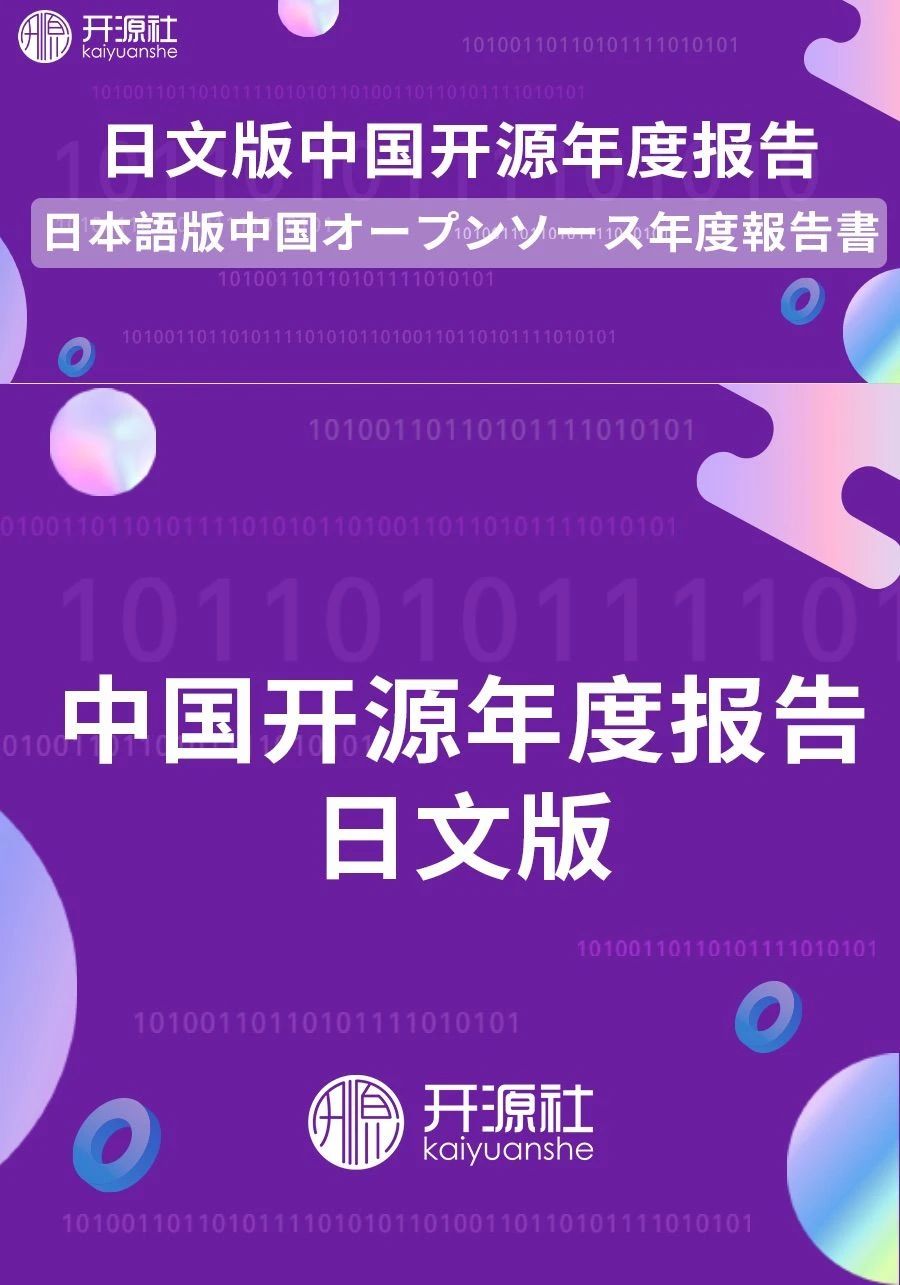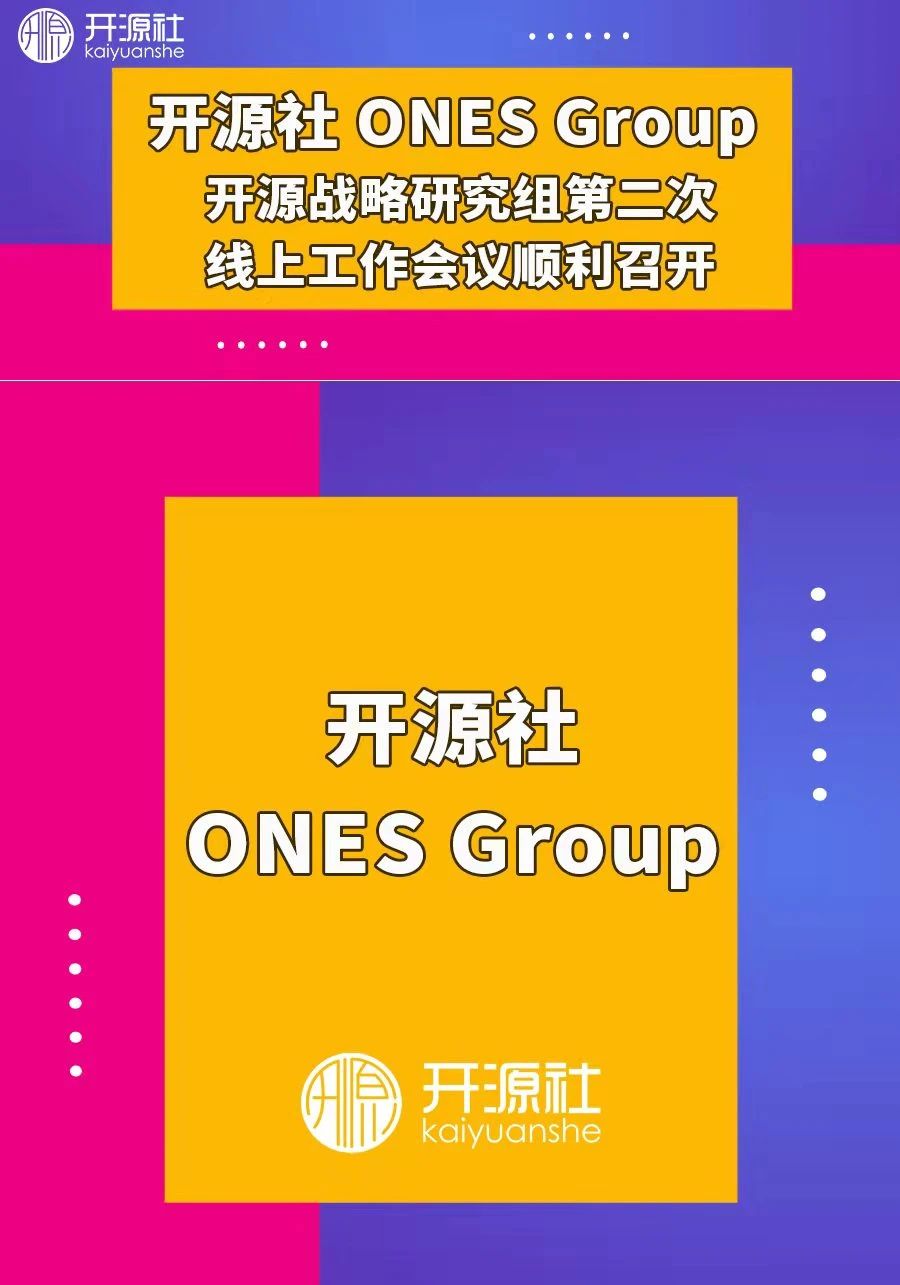2021 中国开源年度报告日文版正式发布,持续向海外传播中国开源声量!

| 作者:高须正和
| 编辑:金心悦
| 设计:宋传琪
------日语(点击阅读原文可前往查看)----------
開源社の中国開源年度報告日本語版を翻訳するのは2019年度版が最初で、この2021年度版で3年目になります。中国のオープンソース運動は、この3年間で長足の進歩を遂げました。3年間それぞれの報告で、その進歩をたどることができます。
2019年のレポートは1つのウェブページで足りるもので、中国オープンソースユーザの年齢層などが紹介されていました。2020年のレポートは69ページのPDFとなり、GitHubに対するデータ分析が行われ、中国から世界のオープンソースへのコミットが可視化されました。かつ、中国国内のオープンソースファウンデーションやオープンソーススタートアップへのページが割かれており、そこには新しい中国の流れがありました。
言うなれば、2019年度版の報告は中国のオープンソース界に関心のあるものが読むべきレポート、2020年度版は現代中国に関心のあるものが読むべきレポートと言えるでしょう。
それを踏まえて158ページにも及ぶ2021年版のレポートを一言で表すなら、「中国に限らず、現在のデジタル社会に興味があるものが必ず読むべきレポート」と言えるでしょう。
これまでのレポート内容に加え、有識者が今年の世界全体のオープンソース10大ニュースを選び、RISC-VやMuran PSLライセンス、中国のオープンソースファウンデーションなど、中国国内の新しい動きに加えて、RMSのFSF復帰に纏わる話やAmazonとElastic、Apache DorisとGoogle等の権利処理について、当事者以外からの検証された解説が加えられているのは、中国の枠を飛び越えて、どのオープンソース愛好家にとっても価値があるものです。
さらに、YUNQI CAPITALによるオープンソース商用化への整理は、他のレポートでは読めないものであり、このデジタル社会でビジネスを行う上では、世界のどこにいても必要な知見だと思います。
僕もメンバーの一人(今のところ唯一の国際メンバー)である開源社のスローガンの一つは、「中国から世界のオープンソースへの貢献」です。
このレポートが中国語以外でも読めるようになることは、明らかに日本のオープンソース界への大きな貢献と言えるでしょう。
高須正和(TAKASU Masakazu)
開源社
tks@kaiyuanshe.org
2022年3月15日
------中文----------
我在2019年首次翻译了开源报告的日文版《中国开源年度报告》,而2021年的这一版是我翻译的第三年。中国的开源运动在过去三年中取得了长足的进步,你可以在这三年的每份报告中追溯到这种进步。
2019年的报告足够一个网页,并介绍了中国开源用户的年龄组。2020年的报告是一个69页的PDF,有GitHub的数据分析,直观地展示了从中国到世界对开放源代码的承诺。以下是该研究结果的摘要。
此外,还有几页是关于中国的开源基金会和开源初创企业的,其中有一个新的中国趋势。
总而言之,对中国的开源世界感兴趣的人应该阅读2019年的报告,而对当代中国社会和商业感兴趣的人应该阅读2020年的报告。
基于此,如果我们要用几个词来描述158页的2021年报告,我们会说这是一份对当前数字社会感兴趣的人必须阅读的报告,而不仅仅是在中国。
2021年版还包括各种专家评选出的今年全球十大开源新闻的内容。这些内容包括中国的新发展,如RISC-V、Muran PSL许可证和中国开源基金会。
这个媒介超越了中国,对整个开源爱好者都有价值。以及围绕RMS回归FSF的各种故事和非当事人的核实评论,加入了亚马逊和Elastic、Apache Doris和谷歌的权利处理。
此外,云启资本对开源商业化的组织是你在任何其他报告中都不会看到的。它是在这个数字社会中,在世界任何地方做生意的必要洞组织察力。
我是开源的成员之一(到目前为止是唯一的国际成员),开源的口号之一是 "从中国为全球开源做贡献"。
把这份报告做成中文以外的语言,将是对日本的开源世界的一个杰出贡献。
高须正和(TAKASU Masakazu)
开源社
tks@kaiyuanshe.org
2022年3月15日。
------英文----------
I first translated the Japanese edition ofKaiyuan's China Kaiyuan Annual Report in 2019, and this 2021 edition is thethird year I have translated it. China's open-source movement has made longstrides over the past three years, and you can trace that progress in each ofthe three years' reports.
The 2019 report was sufficient for one webpage and presented the age groups of Chinese open-source users. The 2020 reportis a 69-page PDF, with data analysis for GitHub, visualizing the commitments toopen source from China to the world. The following is a summary of the resultsof the study.
In addition, pages were devoted to opensource foundations and open-source start-ups in China, where there was a newChinese trend.
In a nutshell, the 2019 report should beread by those interested in the open-source world in China, while the 2020report should be read by those interested in contemporary Chinese society andbusiness.
Based on this, if we were to describe the158-page 2021 report in a few words, we would say that it is a report that mustbe read by anyone interested in the current digital society, not just in China.
The2021 edition also includes a variety of experts who have selected the tenbiggest open-source news stories from across the world this year. Such contentsinclude new developments in China such as RISC-V, the Muran PSL license, andthe China Open Source Foundation.
This medium goes beyond China and is ofvalue to open source enthusiasts as a whole. As well as various storiessurrounding RMS's return to the FSF and Verified commentary from non-parties isadded on the rights handling of Amazon and Elastic, Apache Doris, and Google.
Furthermore, YUNQI CAPITAL's organizationof open source commercialization is something you won't read in any otherreport. It is a necessary insight for doing business in this digital society,anywhere in the world.
One of the slogans of Kaiyuan, of which Iam one of the members (and so far the only international member), is"Contribution to global open source from China."
Making this report available in languagesother than Chinese would be an outstanding contribution to the open-sourceworld in Japan.
TAKASUMasakazu
相关阅读 | Related Reading
春暖花开,共迎未来:开源社顾问委员会第一季度会议顺利召开!
官宣!2021中国开源年报震撼首发!一篇报告带你读懂中国开源的2021~
开源社ONES Group - 开源战略研究组第二次线上工作会议顺利召开













